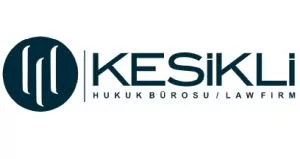- within Energy and Natural Resources topic(s)
- within Energy and Natural Resources topic(s)
- within Strategy, Government and Public Sector topic(s)
New Rules in Energy Finance: Green Asset Criteria for Banks
As is well known, in line with Türkiye's green growth vision and its net-zero emission target, various legislative efforts have been initiated to combat climate change. In this context, the first four articles of the Climate Act were adopted by the Turkish Grand National Assembly on April 10, 2025. However, following public backlash, the act was withdrawn before the remaining provisions could be discussed.
Another regulation directly affecting the banking and finance sector was introduced by the Banking Regulation and Supervision Agency ("BDDK"). The "Communiqué on the Calculation of Green Asset Ratio of Banks" (the "Communiqué") was published in the Official Gazette dated April 11, 2025 (OG No. 32867) and entered into force on the same date. In this article, we provide a quick overview of what the Communiqué entails.
Legal Basis
The Communiqué was issued based on Articles 43/1 and 93/4 of the Banking Law No. 5411 and aims to regulate the procedures and principles for calculating and reporting the green asset ratio and other key performance indicators to measure banks' contribution to financing environmentally sustainable economic activities.
Purpose
The goal of the Communiqué is to establish the methodology for calculating and transparently reporting the green asset ratio and other KPIs that measure the extent to which banks contribute to financing environmentally sustainable economic activities. According to the Communiqué, the "Green Asset Ratio" is calculated by dividing the value of compliant (i.e., "green") assets listed in the bank's non-consolidated balance sheet by the total assets that fall within the scope of the green asset ratio. This ratio serves as the primary KPI for banks' environmental sustainability performance.
Environmental Objectives
The Communiqué outlines environmental objectives including:
- Mitigating climate change
- Climate adaptation
- Transition to a circular economy
- Sustainable use and protection of water and marine resources
- Pollution prevention and control
- Protection and restoration of biodiversity and ecosystems
Banks must adhere to technical screening criteria determined by the BDDK Board when identifying compliant assets and calculating their value.
Minimum Social Safeguards and Do-No-Significant-Harm Principle
Assets considered compliant for green asset ratio calculations must not cause significant harm to the environment and must comply with minimum social safeguards.
The Communiqué (Art. 8) requires that both the activities and the parties related to compliant assets meet the minimum social security standards. The BDDK Board is authorized to determine these standards and decide on the application of standards issued by other competent public institutions. Banks must provide documentation verifying compliance with these standards, make them available for inspection, and ensure compliance is maintained throughout the maturity of the relevant assets.
Banks are also responsible for establishing documentation, classification, monitoring, and control systems for all assets included in the numerator and denominator of the green asset ratio. Reporting must be submitted to BDDK at intervals to be set by the Board.
Key Concepts Related to the Green Asset Ratio
Some essential definitions and calculation rules include:
- Total Assets within Scope: Defined as total on-balance-sheet financial assets, excluding receivables from central government institutions, central banks, and supranational organizations, as well as assets tracked under trading accounts.
- Eligible Assets: Total gross book value of all on-balance-sheet financial assets that relate to activities within the technical screening criteria — regardless of whether they fully meet the criteria.
- Compliant (Green) Assets: A subset of eligible assets that both contribute significantly to at least one environmental objective, do not significantly harm any of the other objectives, and meet the minimum social safeguards.
- Technical Screening Criteria: These assess the environmental impact of economic activities. Banks must prove compliance with these criteria using documentation such as emission reports, feasibility studies, and certifications tied to the investment.
Untraceable Use-of-Proceeds Loans
According to Article 9 of the Communiqué, some working capital loans and similar credits — where the use of proceeds cannot be directly verified — may still be counted as compliant. This applies only if the borrower generates at least 90% of its revenue from compliant assets and has not earned income from non-renewable energy sources in the past year.
Reporting Obligations
Under Article 10, banks must establish internal policies and systems for control and reporting related to assets used in green asset ratio calculations. Reports must be submitted to the BDDK within timeframes determined by the Board. The Board is authorized to differentiate reporting obligations based on the type and size of the bank.
Secondary Performance Indicators
Articles 12 and 13 define additional KPIs, such as:
- the ratio of compliant assets to eligible assets, and
- the ratio of eligible assets to total green-scope assets.
The BDDK Board may introduce further KPIs, impose reporting obligations, and set thresholds or targets. Banks failing to comply could face additional capital requirements or other regulatory measures.
Evaluation
The Communiqué is considered a significant step toward embedding sustainability standards into Turkish law and the financial system. It aligns Türkiye with the EU's green taxonomy and sustainable finance framework, introduces a more rigorous classification system for renewable energy and energy efficiency investments, and prioritizes eco-friendly projects in financial decision-making.
As banks will now regularly report their sustainability performance, the Communiqué is expected to contribute to greater transparency and comparability across the sector. Looking ahead, the BDDK may establish mandatory minimum thresholds for green asset ratios and introduce capital requirements or sanctions for non-compliant banks.
In essence, this regulation creates a robust, audit-friendly framework aligned with international standards and encourages environmentally responsible financing within Türkiye's banking sector — paving the way for more green projects to be funded.
The content of this article is intended to provide a general guide to the subject matter. Specialist advice should be sought about your specific circumstances.



